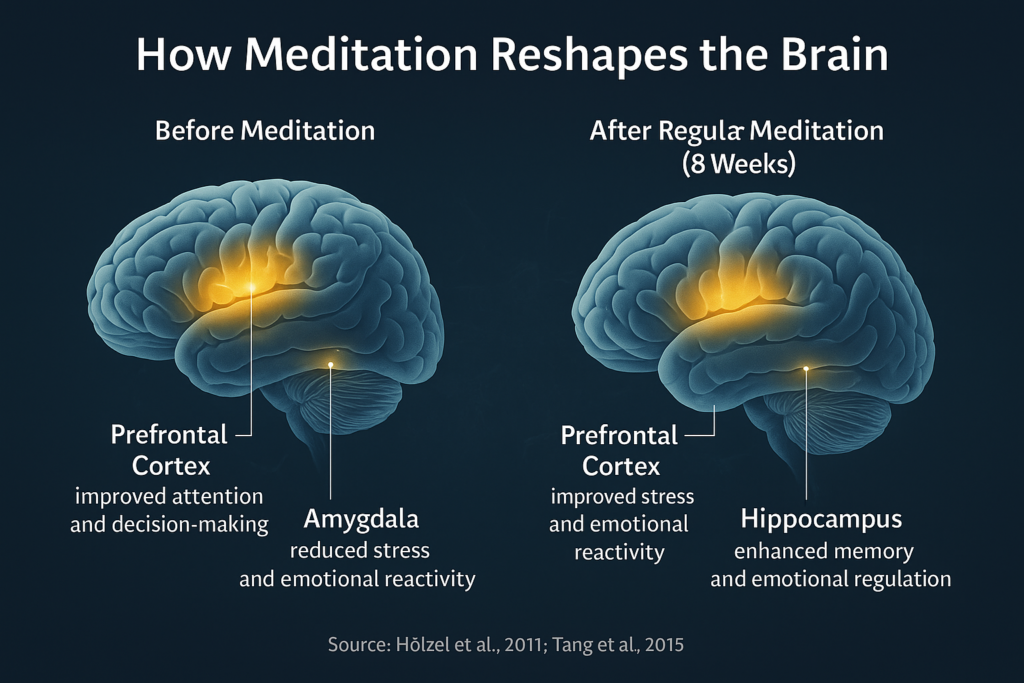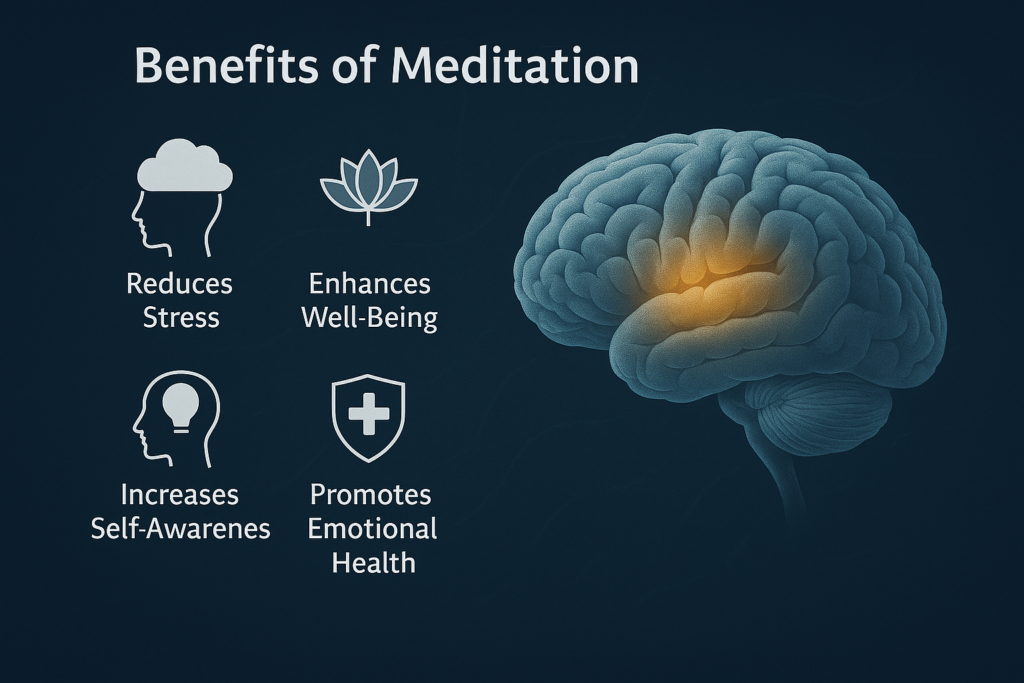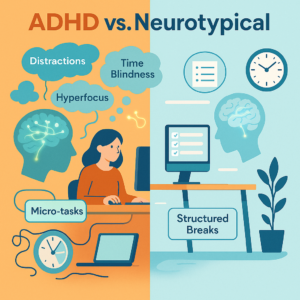In our modern, overstimulated environment, we face a relentless flood of information that overwhelms our cognitive capacities and contributes to persistent stress. Neuroscientific studies demonstrate that meditation serves as an effective regulator of our autonomic nervous system, diminishing stress responses while activating our body’s natural relaxation mechanisms (Tang et al., 2015). Long-term meditation practice has been shown to physically reshape the brain, with measurable increases in gray matter concentration within areas governing emotional control, focus, and metacognition (Holzel et al., 2011). Far from being merely a contemplative tradition, meditation represents an evidence-based method for strengthening psychological resilience and cognitive function.

1. Mindfulness Meditation
Mindfulness meditation comes from Buddhist practice and teaches you to focus on the present moment without criticism. Research shows it trains your brain to concentrate better and quiet the mental “noise” that leads to distraction and overthinking (Brewer et al., 2011).
How to Practice:
- Sit comfortably with your back straight.
- Close your eyes and focus on your breath.
- Observe the rise and fall of each inhale and exhale.
- Gently bring your attention back whenever your mind drifts.
Benefits: Improves focus, reduces anxiety, and cultivates emotional balance.
2. Body Scan Meditation
This method guides you to focus on each body part one by one, helping you relax and release tension.
How to Practice:
- Lie down or sit comfortably.
- Slowly direct your attention from your toes upward through the body.
- Notice any areas of tension and consciously relax them.
Benefits: Eases muscular tension, improves sleep quality, and calms the nervous system.
3. Loving-Kindness Meditation (Metta)
This practice teaches you to cultivate warmth and care—both for yourself and others. Research shows it boosts positive feelings and strengthens relationships (Fredrickson et al., 2008).
How to Practice:
- Sit quietly and think of someone you care about.
- Silently repeat phrases like “May you be happy. May you be healthy. May you live with ease.”
- Gradually extend these wishes to yourself, loved ones, strangers, and even those you find challenging.
Benefits: Increases empathy, reduces negative emotions, and fosters emotional resilience.
4. Mantra Meditation
Repeating a calming word or sound during this exercise helps quiet your thoughts and deepen relaxation.
How to Practice:
- Choose a mantra (e.g., “Om” or “Peace”).
- Sit comfortably and repeat the mantra silently or aloud.
- If distracted, gently bring your focus back to the sound.
Benefits: Enhances focus, reduces mental chatter, and promotes calmness.
5. Visualization Meditation
This method uses calming mental pictures to help you relax and think more clearly.
How to Practice:
- Close your eyes and picture a calming place – like a quiet beach or peaceful forest.
- Use all your senses to make it feel real (notice sounds, smells, textures).
- Stay with this image for a few minutes, letting yourself relax fully.
Benefits: Lowers stress hormones and enhances positive thinking.
6. Walking Meditation
Perfect for: Anyone who struggles with seated meditation or wants to stay active while cultivating mindfulness.
Simple Steps:
- Walk slowly – Focus completely on each step you take.
- Stay grounded – Notice the sensations of your feet touching the earth.
- Be present – Keep gentle awareness of your surroundings (sounds, air, movement).
- Sync with breath (Optional) – Match your breathing to your steps for deeper focus.
Benefits: Enhances mindfulness in daily life and promotes calm through gentle movement.
How to Create the Perfect Meditation Space
Your environment can make or break your meditation practice. A peaceful, distraction-free area helps your mind and body relax more deeply.
Simple Ways to Set Up Your Space:
- Lighting – Soft, warm light (like lamps or candles) helps calm your mind.
- Scents – Try calming essential oils (lavender, sandalwood) to ease stress.
- Sound – Use nature sounds or soft music—or enjoy total silence.
- Comfort – Sit on a cushion or chair where you can relax without slouching.
- Minimize Distractions – Keep your space tidy and electronics away.
When Is the Best Time to Meditate?
Short answer: Whenever you can do it consistently. But different times of day offer unique benefits:
🌅 Morning Meditation
✔ Benefit: Starts your day calm and focused
✔ Best for: Preventing stress before it builds
☀️ Midday Meditation
✔ Benefit: Recharges your mind during slumps
✔ Best for: Overcoming afternoon fatigue
🌙 Evening Meditation
✔ Benefit: Releases the day’s tension
✔ Best for: Better sleep and relaxation
Pro Tip: Begin with 5–10 minutes daily—consistency matters more than duration. Increase slowly as it becomes a habit

Final Thoughts
Meditation isn’t about stopping your thoughts—it’s about observing them without judgment. The magic happens when you:
✔ Notice distractions, then gently return to focus
✔ Practice consistently, even for just a few minutes
✔ Experiment to find what resonates with you
References
- Tang, Y. Y., Hölzel, B. K., & Posner, M. I. (2015). The neuroscience of mindfulness meditation. Nature Reviews Neuroscience, 16(4), 213–225.
- Hölzel, B. K., et al. (2011). Mindfulness practice leads to increases in regional brain gray matter density. Psychiatry Research: Neuroimaging, 191(1), 36–43.
- Brewer, J. A., et al. (2011). Meditation experience is associated with differences in default mode network activity and connectivity. Proceedings of the National Academy of Sciences, 108(50), 20254–20259.
- Fredrickson, B. L., et al. (2008). Open hearts build lives: Positive emotions, induced through loving-kindness meditation, build consequential personal resources. Journal of Personality and Social Psychology, 95(5), 1045–1062.

